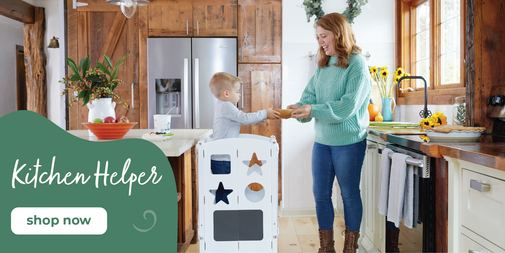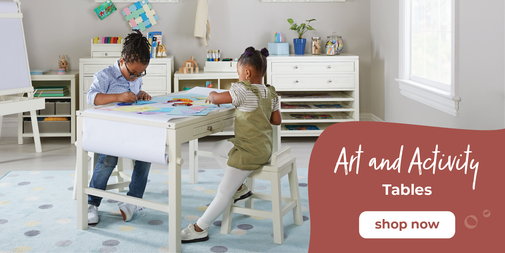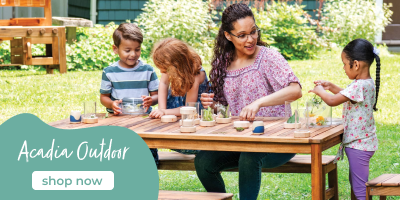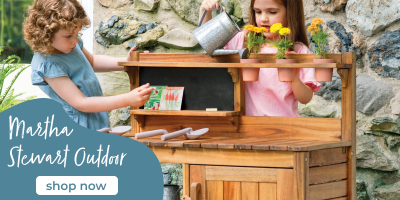Montessori vs. Reggio: ¿Cuál es la mejor manera de organizar tu espacio?
Las filosofías Montessori y Reggio han ido ganando popularidad y es posible que sienta curiosidad por saber cómo integrarlas en su hogar o aula. ¿Qué distingue al método Montessori del enfoque Reggio y cómo puede inspirarse en cada uno de ellos para crear un entorno de aprendizaje o juego atractivo que se adapte a las necesidades de su hijo?
Tanto la filosofía Montessori como la Reggio ofrecen beneficios valiosos para la educación de la primera infancia y más allá. Comprender los elementos clave de cada una puede ayudarlo a determinar qué se adapta mejor a los niños a su cuidado. En casa, no es necesario comprometerse por completo con una sola filosofía. En cambio, siéntase libre de combinar aspectos de ambos enfoques para satisfacer mejor las necesidades únicas de sus hijos.


¿Qué es el método Montessori?
El método Montessori es un enfoque educativo desarrollado hace más de un siglo por la Dra. María Montessori.
El "entorno preparado", un espacio cuidadosamente diseñado donde los niños pueden trabajar de forma independiente, es fundamental en el método Montessori. En las aulas Montessori, el adulto prepara materiales y actividades que se adaptan a las necesidades de desarrollo y los niños seleccionan estos materiales de forma independiente.
La Dra. Montessori desarrolló muchos materiales para facilitar el aprendizaje de los niños desde el nacimiento hasta la adolescencia. Pero es importante señalar que no diseñó ningún juguete para niños. No existe un “juguete Montessori”, pero sí hay formas de seleccionar y presentar juguetes y materiales que se alinean con los principios Montessori.
Configurar tu espacio para que esté inspirado en Montessori es bastante simple y probablemente puedas hacerlo con materiales que ya tienes, ajustando la forma en que los presentas.
Siga estos consejos para presentar los juguetes de forma inspirada en Montessori:
1. Organiza los juguetes y materiales en un estante abierto.
La estantería Montessori es un aspecto importante de la filosofía porque proporciona un espacio organizado y accesible donde el niño puede acceder a los materiales de forma independiente. La estantería debe estar llena, pero no abarrotada, lo que permite al niño encontrar y sacar fácilmente los materiales que desea utilizar.
2. Centrarse en materiales cerrados con control de errores.
Los materiales o juguetes de final cerrado están diseñados con un objetivo o resultado específico, como rompecabezas o juegos de clasificación. Puedes hacer que una actividad sea más cerrada agregando un objetivo visual, como tarjetas con patrones para hacer abalorios o tarjetas de construcción para un juego de construcción de final abierto.
Un "control de errores" ayuda a los niños a autocorregirse sin la intervención de un adulto. Por ejemplo, las piezas de un rompecabezas solo encajan si se colocan correctamente. Puedes añadir un control de errores a otras actividades utilizando puntos de colores en el dorso de las tarjetas para clasificar o proporcionando comparaciones visuales (como una fotografía) para el trabajo terminado.
3. Presentar actividades no realizadas con todos los materiales necesarios juntos
Una pila de anillos o un rompecabezas terminados pueden quedar bien en un estante, pero son menos atractivos para el niño. En lugar de eso, organice actividades que no se hayan realizado con los materiales dispuestos en una bandeja, dejando espacio para que cada elemento sea visible. Esta disposición promueve el orden y la organización, lo que ayuda a los niños a concentrarse en la tarea en lugar de juntar los materiales que faltan o vaciar la bandeja para encontrar piezas ocultas.
¿Qué es el enfoque de Reggio Emilia?
El enfoque Reggio Emilia, desarrollado en Italia durante la década de 1940, se centra en la exploración y la creatividad abiertas. En los entornos Reggio, los adultos proporcionan una variedad de materiales y herramientas abiertos, junto con provocaciones, configuraciones atractivas que guían el aprendizaje y el juego. Se invita a los niños a explorar, interactuar y experimentar con estos materiales a su manera única. Los educadores Reggio responden activamente a los intereses y pasiones de sus estudiantes adaptando el entorno y creando provocaciones que atraigan y desafíen sus intereses cambiantes.
Puedes crear un espacio de aprendizaje o de juego inspirado en Reggio tomando decisiones bien pensadas sobre cómo presentar los materiales.
A continuación se ofrecen algunos consejos para presentar juguetes y materiales de forma inspirada en Reggio:
1. Utilice estanterías abiertas y contenedores abiertos para exhibir los materiales de forma hermosa.
Asegurarse de que los materiales sean visibles y accesibles es esencial para facilitar el aprendizaje abierto a través del juego. Cuando los niños pueden ver todos los materiales y herramientas que tienen a su disposición, pueden planificar y llevar a cabo mejor su trabajo. La filosofía Reggio hace hincapié en la creación de entornos que sean a la vez bellos y funcionales, mejorando la capacidad de los niños para participar y explorar.
2. Priorizar los materiales abiertos
Los entornos Reggio priorizan los materiales y juguetes de uso abierto que les dan a los niños la libertad de decidir cómo usarlos. Estos juguetes están diseñados sin un resultado específico en mente, y sirven como herramientas neutrales para el juego creativo e imaginativo. Un ejemplo clásico de un juguete de uso abierto son los bloques. Los juguetes de uso abierto dejan el trabajo de la imaginación y la creatividad al usuario.
3. Fomentar el aprendizaje mediante provocaciones
Una provocación de Reggio es una invitación a aprender o jugar. Puede ser visual (simplemente en la forma en que se presentan los materiales) o escrita (a veces como una pregunta) y, a menudo, sirve para guiar al niño a interactuar con un material de una manera determinada.


A veces, una provocación sirve para desafiar la comprensión previa de un niño y otras veces puede ayudar al niño a trabajar de una manera que podría ayudarlo a solidificar su conocimiento de un concepto, por ejemplo, desarrollar su comprensión de la simetría (¡como se muestra aquí con mariposas!) o el trabajo de patrones (como se muestra con una provocación escrita).

En mi casa, he descubierto que una combinación de métodos Montessori y de final abierto funciona mejor para mis hijos. Uno prospera con la estructura de estanterías inspiradas en Montessori, mientras que el otro se destaca con materiales de final abierto inspirados en Reggio para la resolución independiente de problemas. Equilibrar estos conceptos y alentarlos a ambos a explorar más allá de sus estilos preferidos ha dado lugar a muchas experiencias de aprendizaje enriquecedoras para nuestra familia. ¡Te animo a que pruebes estos consejos en tu propio espacio!





















